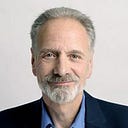Actually Helping a Hungry Family
Bring Food, Not Forms
Doing-good in the world I know means organizations. It means Boards of Directors and staff and an office. Utility bills. A website. Annual filings you need lawyers and accountants to do.
Doing-good in the world I know means spending more effort on maintaining and growing the organization than whatever its original doing-good goals were.
I know this is true because of my own experience co-founding and working for non-profit corporations with doing-good goals — and also because I’ve read astute analyses of big-time doing-good, most recently, ‘Winners Take All,’ by Anand Giridharadas.
For most of human history, doing-good wasn’t done this way.
Doing-good has to be about relationships; when it’s not, it is almost impossible to be helpful. When someone is in desperate need, someone who knows them knows about their situation and the best way to help.
Then, if they know the right people, they take the problem to a network of helpers that doesn’t exist.
VOFCIN (Voices of Children in Need), in Nairobi, Kenya, is one of those ‘non-existent networks’. Of course it does exist and the people pictured above are all part of it — but it has not invested its resources in the prominent external indicators of an Organization. There is no office. No staff. The website is a Facebook page, which is the way of all non-existent organizations worldwide.
There is also no rent to pay and no payroll to meet.
Henrietta, pictured on the left in orange, smiling, knew a family that had no income and two infants in a difficult medical condition. She brought the situation to VOFCIN and about 48 hours later help was on the way.
This is how doing-good is done.
The immediate need was food, so people in VOFCIN all chipped in and bought 7 bales of porridge flour, 2 boxes of milk, 10 packets of diapers and Pampers, and 4 cartons of cookies. Then they packed it all in a little van and took it right to the family.
Good for VOFCIN, but that’s just one family.
How does it scale, you ask?
It scales the way real help always has, ways that many humans stopped being involved in when they moved to cities, away from traditions that had sustained communities, and into a new individual life for themselves.
How’s that working out?
Extremely well for a very few people and not so well for a lot of others.
And since we’re not going back, the only way forward for most of us isn’t a bigger VOFCIN — it’s more VOFCINs, lots more.
Scaling by replication.
There is no reason we cannot bring approaches to doing-good that have worked since forever into the mega-urban settings the majority of us live in now.
In fact, we are. VOFCIN and thousands of other little non-existent groups all over the world that you don’t hear about because they don’t have a Main Office Tower like, say, the Gates Foundation, are doing it.
Main Office? They don’t have a phone number. But people know how to make the network come to life at the right times.
VOFCIN isn’t trying to get bigger. It’s making connections with other ‘non-existent groups’ also trying to improve the lives of people they can help directly, all over Africa.
Plenty of western-style helpers have been helping themselves to Africa ever since they ‘discovered’ it. They don’t know it yet, but that era is over.
Africa can take care of itself. If the rest of the world pays attention, it might learn something.
Tom’s work has not appeared in The New York Times, New Yorker Magazine, The New Republic, the New England Journal of Medicine, or anything New at all.
He only publishes in obscure journals and, once upon a time, PBS Program Guides. Otherwise he just gives his work a URL and sends it packing on the web at places like Medium and Sub-Stack, where he enjoys a modest following.
